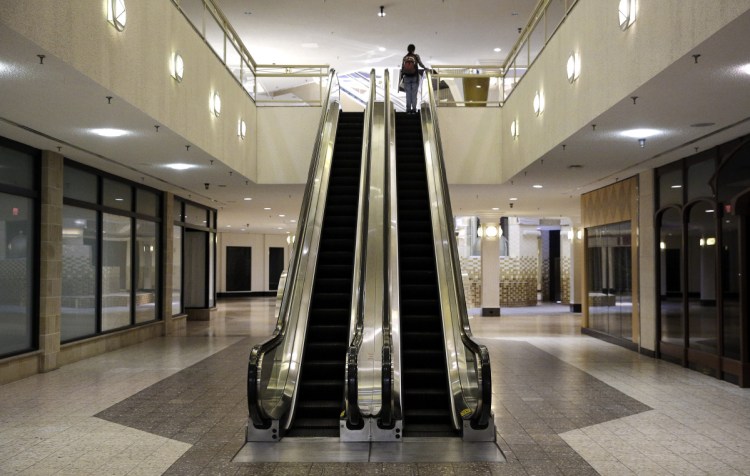The recent news that Bangor Mall and the Aroostook Centre Mall in Presque Isle are going on the auction block provides more proof of shifting consumer patterns in retail. While it is unfortunate to see venerable brands like Sears and JCPenney go out of business, it provides communities with new opportunities around land use.
As consumers begin to move away from malls, it is vital for us to have future plans on how to occupy the space these retail centers make up. If we don’t have a plan for future land use, spaces like the Auburn Mall or the Maine Mall could end up abandoned shrines to American consumerism, stuck in time as museums to explorers of urban decay.
Experts suggest a variety of solutions on how to rejuvenate shopping areas. Creating a mixed-use development, in which retail space is buffered by affordable housing, restaurants, offices and shared spaces, allows for community to flourish.
Redeveloping into offices or community amenities (urgent-care clinics, libraries, gyms) has helped several shopping centers increase their viability. TD Bank’s call center at the Auburn Mall is proof of such success.
Harnessing the buying power of Maine’s immigrant and refugee communities is another key component. Many shopping centers have found success providing space for immigrant small business or ethnic food and clothing establishments. Creating retail “destinations” that provide family fun and attractions has proven successful, like the Round One Amusement Center at the Maine Mall, for example.
For the most part, Maine has remained relatively inoculated from the “retailpocalypse” ravaging other parts of the country. Tourism from Canada and our own remoteness have continued to feed the popularity of some retail areas. However, if we want our economy to continue to grow and prosper, we need to be aware and prepared to creatively respond to economic changes.
Benjamin Kissin
Freeport
Send questions/comments to the editors.


